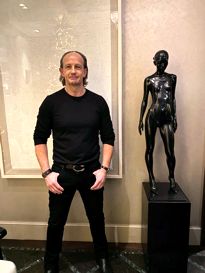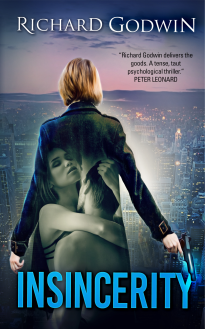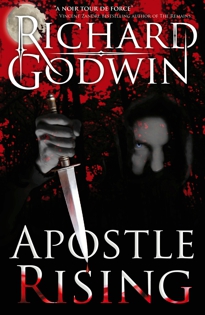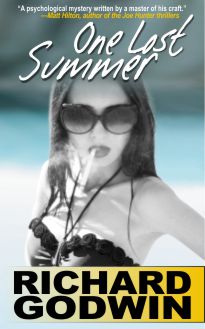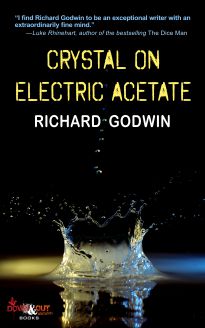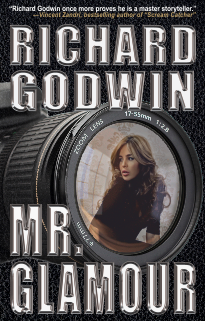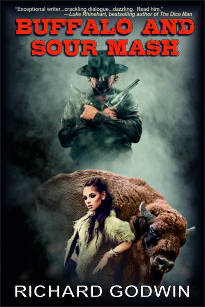
Alan Brenham is a crime novelist and attorney. He worked as a Special Deputy US Marshall and a police detective in Temple, Texas. His first novel was Price Of Justice, a dual narrative reality-based thriller. Alan met me at The Slaughterhouse where we talked about policing and guns.
Tell us about Price of Justice.

Price of Justice was my first novel. Written in a combination of 3rd person and 1st person POV, it tells two stories, one of a grieving detective, written in 3rd person, trying to raise a young daughter while working within the framework of the law to stop pedophiles, and the other of a mother, narrating her own story, seeking vengeance against the same pedophiles while fighting to maintain her own moral integrity. The book deals with their struggles, their mutual attraction and how each changes the other. Kirkus Reviews called Price of Justice “A gripping, fast-moving and emotionally charged drama centered on well-drawn characters with genuine motives.”
How has your work as a Treasury agent and overseas had an impact on how you see crime as a novelist?
Being an agent had no impact on how I view crime as a novelist.
Travel, surveillance and writing reports were the predominant tasks I performed.
I left the job to become a street cop so I could have all the interaction with criminals I wanted.
The impact jobs were the police positions and the attorney career.
How did being a street cop inform your understanding of crime?
As a street cop as a first-responder, I got an up-close look at crime in all its forms, ranging from emotional-based offenses such as family disturbances to a bloody massacre at a low-class bar, then to deliberate crimes such as sexual assault and murder. At first, I felt a sense of shock at these scenes – a kind of naiveté that morphed over time into “us against them” cynicism.
The cynicism developed from learning that I couldn’t predict what anyone was going to do or say at any given time, making me stay vigilant whenever I dealt with people in any capacity – victim, witness, or offender. You just didn’t know who was lying. Some victims turned out to be offenders and vice versa. Witnesses “forgot” facts due to fear or just plain “I don’t want to get involved” attitudes.
It came down to a need/belief that whatever they said or did had to be verified. Their word alone carried no absolute value. And, of course, I had to keep my guard up since I didn’t know what might be going through a person’s head. Intoxication, rage, depression, woman scorned, and some mental conditions made for some dangerously-charged moments. What I learned from 14 years was that people are capable of inflicting any degree of harm, justifying lies/actions in any form that their mind tells them is okay at that time.
What are your views on gun culture in the USA?
A plain reading of the 2d Amendment to the US Constitution ties the right to carry to having a “well-regulated militia”. When Congress and the States passed and ratified that Amendment, it’s my view that they expected people to be armed in the event of a need to fight an invading army.
Of course, in that time (circa 1791), men used rifles and pistols for hunting and protection from external sources although I doubt that in 1791 they were experiencing the level and sophistication of violent criminal activity happening today. In this day and time, criminal offenders will always find a way to obtain weapons.
But, on the flip side, a potential crime may be prevented if an offender wonders if his prey may very well shoot back. From my experience as a police officer, I know of one instance where a pharmacy owner stopped an armed robbery of his business by having a gun available. He used it to shoot and kill the robber. That offender had a track record for shooting his victims. In yet another instance, from a court case I prosecuted, a college student was kidnapped off the streets of Austin, driven to another county and assassinated at a roadside park for his car. One has to wonder if he had been armed or in the very least, if the offenders (two of them in this case) thought their victim might be armed, perhaps the young man’s death may not have happened. Therefore, I believe qualified citizens must be allowed to possess and carry firearms.
By qualified, I’m referring to those who not only qualify at a range but satisfy certain background checks. The allowable firearms should be restricted to semi-automatic weapons. I can conceive of no circumstance where a citizen needs an automatic weapon for self-protection, sport, or hunting. Others may disagree but those are my views.
While many crimes are economically motivated or opportunistic there are extreme criminal acts that stem from pathology. What are your views on pathological crime and its detection?
Certainly, pathological crime is harder to detect, but it’s not impossible. Much in the landscape of criminal investigation has changed since people like Ted Bundy, the I5 Killer, Son of Sam and others inhabited the Earth. Long gone are the days when investigators had to rely solely on eyewitness statements, fingerprints, and confessions. The major impediments to solution of a pathology-based crime are public perception (no thanks to TV shows like CSI) that police can solve it and make the arrest in an hour; and, the difficulty of finding the person of interest once an ID has been made by methods such as DNA, or other computer-supported means.
Once police arrest a person of interest, a cat-and-mouse game ensues. Most pathological offenders are very intelligent and deny any involvement with a “prove-it” mentality. Their ego convinces them they are actually intellectually superior to investigators, attorneys and the like, and, honestly, some of them are. Lying is a means to an end for many of them. Even when faced with overwhelming evidence, They’ll persist in denials. A jury trial is the end result. For most pathological offenders, their crimes are so heinous, no plea deals are even considered by prosecutors.
What are your views on the efficacy of the court system?
First, I want to say that my response is limited to Texas criminal courts.
Courts are bureaucracies. Each court has a judge, a court coordinator, two assigned prosecutors, bailiffs, one or two probation officers, a deputy county or district clerk depending on the court’s subject-matter jurisdiction (misdemeanor or felony). Each has a role in the court’s operation and as such, each has an impact on that court’s efficiency – some, of course, having a greater impact than others. Bureaucracies plod along.
Texas courts operate on a docket system. Cases get placed on a docket. Each court employs a court coordinator whose job it is to schedule cases on a given docket: appearance docket; arraignment docket, pre-trial docket, plea docket, trial docket, and/or jury trial docket. Courts are expected to move dockets. When they don’t, the system bogs down. More cases are filed, making the dockets grow. Cases fall through the cracks. People languish in jail.
Typically a court will hold a docket call for a particular docket, for example, arraignment docket on Monday, and plea docket may be heard on a Friday. In between, will be hearings on attorney motions, bench trials, and special pleas. There’s only so much time in a day. Judges’ brains, like anyone else, can only absorb as much as their butt allows. Attorneys, especially defense, file motions, some of which are subtly designed to impede the court’s moving of cases to disposition. The more time that passes without a case going to trial, the more likelihood witnesses and victims move out of the court’s jurisdiction or die or forget or evidence gets lost or disappears.
But the fault for being an impediment doesn’t always lie at the feet of defense attorneys. Prosecutors share blame too as do government agencies who file certain types of cases.
In one instance, I represented, by appointment, a middle-aged man in jail for aggravated sexual assault of a child. The indictment charged him with sodomy of his grandson. Sounds horrible but when I sought copies of the agency’s file, they refused to turn it over to me, releasing it instead to the DA. After a careful read of that file, the DA dismissed the case. The government agency had sat on evidence that the boy had recanted his story when meeting with an agency-retained counselor. So, here was a case clogging the docket that should have never been indicted.
After a trial is finished, the defendant, assuming he lost, files an appeal which allows the case to languish for a few more years. Occasionally, especially now with the advent of the Innocence Project and DNA testing, convictions are reversed and sent back for a new trial. The system then begins anew for that case. Recently, in a county north of Austin, an overzealous prosecutor hid mitigating evidence and lied to the court about its existence, resulting in an innocent man having to spend 25 years in prison for a murder he never committed. Thanks to the Innocence Project and DNA testing, he was absolved of the conviction and released with apologies all around. The actual offender was caught. That prosecutor had been elected as a state judge. He resigned and lost his law license as a direct result of his false assurances to the court and the defense.
I’m not sure how the court system can make itself more efficient. It has to follow laws and procedures set down by higher entities. The Texas Supreme Court and the Texas Court of Criminal Appeals set procedures for civil and criminal cases. The Legislature passes penal statutes. Politicians (including prosecutors) rant about being tougher on crime so they can feed out of the public trough. Prisons fill to the max allowed by federally mandated rules. It’s like a pendulum that swings back and forth. A few years ago, during the “let’s get tough on crime and build lots of prisons” cry by politicians, I saw a newspaper cartoon featuring an elderly couple standing outside a small home, looking at a prison and saying: “Myrtle, I think we’re the last two Texans who aren’t in prison.”
Tomorrow, faced with the rising cost of building more prisons and hiring/training more guards, case dispositions may flow faster with both defense and prosecution making use of community-based correctional options as an alternative to prison, reducing backlogs and improving court efficiency.
Hollywood’s depiction of cops, like many things in the film industry, is arguably distorted and glamourised. Would you say that the reality of police work is meticulous information gathering and that many criminals avoid imprisonment while victims remain unrewarded by the kind of justice seen in films?
Real-life police work is nothing like what is depicted on TV and in films. It consists of detailed information collection, most of which lacks any semblance to the glamor portrayed on TV and in the movies. Not every lead generated or called in by a citizen results in solution of the offense and apprehension of the offender(s).
Unless the offender is arrested at the scene or a short distance away, a bona fide offense is rarely ever solved in an hour as shown on cop shows.
When an offense is reported to police, a uniformed officer (s) respond to the scene. Depending on the type of offense, the initial investigation can consist of a preliminary interview (A lengthy question and answer type) of the victim(s), identification of any witnesses and the taking of their statements, to a full-blown crime scene search for evidence, detailed photographs of the scene, of the victim’s injuries (or of the body). The officer’s interview is recorded in a report which takes a day or two to be assigned to a detective. The subsequent investigation may last anywhere from a day to becoming a cold case, that is, one that’s never solved.
Often, a victim of a property crime, like burglary, may never recover their missing property or it may be found in pieces, damaged and unusable. Crimes against persons, such as assaults, have to live with the trauma, unlike the “happy-ever-after” endings seen on TV.
Tell us about Cornered.
 Set in a small city in central Texas, Cornered is a dark crime thriller about a police detective haunted by the memory of a cold case kidnapping/murder gone bad. Detective Matt Brady struggles to solve the disappearances of seven young professional women but quickly finds himself pitted against a criminal organization that knows as much about police techniques as he does—an organization that will do whatever it takes to stay one step ahead. His troubles mount when he steps into the cross-hairs of a professional cop killer. The story features not only the protagonist detective but a strong female character, Dr. Tracy Rogers, as well. Using dual protagonists seems to be a trademark for me. I used it in Price of Justice and am using it (with a twist) in my current project, Rampage.
Set in a small city in central Texas, Cornered is a dark crime thriller about a police detective haunted by the memory of a cold case kidnapping/murder gone bad. Detective Matt Brady struggles to solve the disappearances of seven young professional women but quickly finds himself pitted against a criminal organization that knows as much about police techniques as he does—an organization that will do whatever it takes to stay one step ahead. His troubles mount when he steps into the cross-hairs of a professional cop killer. The story features not only the protagonist detective but a strong female character, Dr. Tracy Rogers, as well. Using dual protagonists seems to be a trademark for me. I used it in Price of Justice and am using it (with a twist) in my current project, Rampage.
This novel took me about a year to finish from when I typed the first word until I signed a publishing contract for it. The story is set in Temple, Texas, where I had worked as police officer and detective for over 8 years, The Temple police chief and a detective served as technical consultants for the modern operational procedures for the department. My wife and I made several trips to the city to select and photograph suitable locations for scenes appearing in the book. Overall, writing the book was a lot of fun: it brought back memories of places I used to frequent, places I had lived, and sites where some of my more infamously memorable police events occurred, ranging from the location where I made my first arrest of a drunk pedestrian to a shooting call where I ended up facing the business end of a double-barrel shotgun. For Cornered, I even made use of a murder case I worked there which, unfortunately, remains unsolved to this day. I tried to make the story and the characters interesting and memorable and must have been successful since Kirkus Reviews called Cornered “a rock-solid thriller”.
Are there any particular authors you admire and if so why?
I have three main crime fiction authors I openly admire: Michael Connelly, John Sandford, and Michael McGarrity.
Connelly and his Harry Bosch novels – Connelly uses his LA Times crime beat writer past to great effect in characterizing Harry Bosch. He fashioned Bosch as an old-fashioned pavement-pounding, door-knocking LA detective, neither computer-literate or technically adept with modern devices such as cell phones. Riddled with flaws and personal problems, Bosch is the archetypical detective who gets it done in spite of LAPD bureaucracy, his distrust of the FBI, and his failed romantic interests. Connelly deserved all the awards he received for his Bosch novels.
John Sandford, on the other hand, created Lucas Davenport, a rich police detective who neither cares what anyone thinks nor which rules he breaks to get the job done. Unlike Bosch, he has a number of girlfriends before marrying a very likeable female surgeon. Sandford made Davenport a rough, salty investigator who not only talks the talk, but walks the walk. A reader can’t help but root for Davenport and for his wife, Weather Karkinnen as they live and work in the twin cities of Minneapolis-St. Paul.
Michael McGarrity created the Kevin Kearney series. Kearney is a New Mexico lawman married to an Army officer wife. Kearney has to deal with his wife’s Army posts being far from home. With a past which included fathering an out-of-wedlock Indian son he never knew he had until well after the son got his own family, Kearney continues to plug away at cases that take him all over landmark places in New Mexico which McGarrity describes to great effect in his novels. He gives the reader the sense that he (the reader) is right there in rural New Mexico, probably in a little more descriptive detail than either Connelly or Sandford do for the big cities.
There have been many novels and films in recent years depicting the perceived threat in the US from Mexican crime drifting across the border, particularly at places like El Paso owing to its proximity to Ciudad Juarez, and exemplified in the relentless lawless force that is Anton Chigurh in Cormac McCarthy’s seminal classic No Country For Old Men, in which Temple Texas is mentioned in the famous coin toss scene. What are your views on the reality of the threat posed by Mexican cartels to the American economy and safety?
The threat is very real. The Mexican cartels have spread like a cancer across the Texas-Mexico border, north into Dallas, Houston and beyond. Much of the American public’s perception of the cartels is that they are involved in drugs. But, like the Mafia, their fingers have gone into many enterprises, such as trafficking/prostitution, vehicle theft, murder, and weapons acquisition. With theft, the retailers raise prices to cover their losses, making goods and services cost more, and thereby impacting our economy. Insurance companies have to cover vehicle thefts for cars, vans and trucks hijacked to Mexico.
But the border area is the war zone. The Cartels are murdering anyone and everyone opposing them without regard to nationality. Americans have been killed deliberately and as collateral damage (caught in the cross-fire) in a few of the Mexican border towns like Matamoros – across from Brownsville, in Nuevo Laredo, and, of course, Juarez. News media articles mention occasional mini-firefights between US officers and persons on the other side of the River. Reports have surfaced about the Cartels assisting terrorists to move across the border. Yesterday, news media reported on the theft radioactive materials from the US. The materials were located inside Mexico.
The border is now staffed with National Guardsmen, Texas Rangers, and state troopers as well as Customs and Border Protection agents. Nightly helicopter patrols of the kind seen in Iraq and other combat areas are routine. Taxpayers are footing the bill for these deployments. A finite amount of tax money is in local and state government coffers. The shifting of tax moneys to finance these deployments and the supplies to sustain them mean some other services are faced with a reduction in funding and have to bite the bullet.
Corruption is worsening on our side of the border. I’ve read of multiple arrests by FBI and convictions of border area judges, law enforcement officers, and federal agents for assisting in drug and human smuggling, and bribery. Trials of those officials arrested cost money as does the housing and care of them when they are incarcerated. And , of course, there is the border wall/fence along the US-Mexico border, erected with tax money and having repairs made to holes in it and paid by more tax dollars. The bottom line is that the Cartels have grown into multifaceted criminal enterprises that have snaked their way into American society and impacted our economy.
Thank you Alan for a perceptive and informative interview.
 Links:
Links:
Get ‘Price of Justice’ for your Kindle at Amazon US or UK, or in paperback format, Amazon US and UK
‘Price of Justice’ is also available at the publisher Black Opal Books, Barnes & Noble and Kobo.
See also Alan’s website for other buy links.












